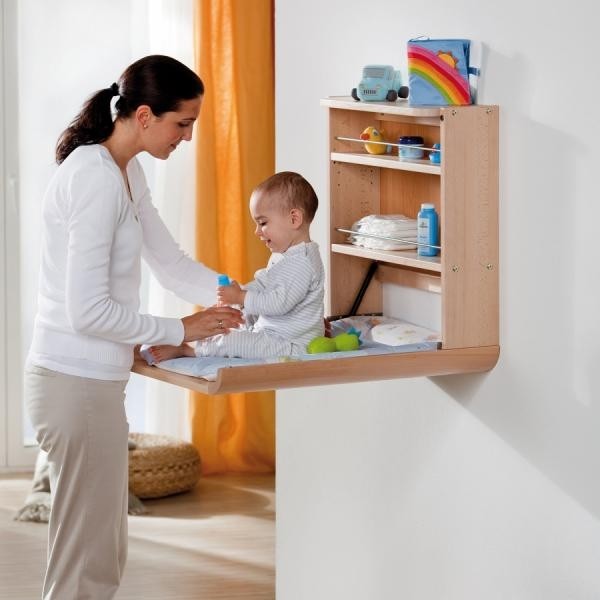Choosing Safe Baby Products - Changing Tables

Generally, you can choose from three kinds of changing tables:
Babies can get hurt if they fall off changing tables, so they should always be watched closely.
What to look for:
Wooden changing tables with rails are usually the least likely to sway or tip over when a baby pulls on them from the floor.
Fold-up models should be checked for sturdiness: When the table is open, give it a good shake.
A wire changing table should have a wide base so that a baby can't pull it over on top of himself or herself from the floor.
The table should have shelves or compartments for storing everything you'll need. This prevents you from taking your eyes off your baby while you look for that hard-to-find item. You should keep supplies within your reach, but out of the baby's reach, since many diaper supplies are dangerous for babies.
A flat changing surface should be surrounded on all four sides by a guardrail, which should be at least 2 inches (5 centimeters) in height. The surface should be lower in the middle than on the sides, which helps keep the baby from rolling from side to side.
SAFETY NOTES:
Use the safety belt every time you change your baby.
Never leave your infant unattended even if you think he or she is secure.
Stop using your changing table when your baby reaches the age or weight limit recommended by the manufacturer, which is typically age 2, or 30 pounds (13,607 grams).
- wooden ones with guardrails
- fold-up models
- hinged chest adapters
Babies can get hurt if they fall off changing tables, so they should always be watched closely.
What to look for:
Wooden changing tables with rails are usually the least likely to sway or tip over when a baby pulls on them from the floor.
Fold-up models should be checked for sturdiness: When the table is open, give it a good shake.
A wire changing table should have a wide base so that a baby can't pull it over on top of himself or herself from the floor.
The table should have shelves or compartments for storing everything you'll need. This prevents you from taking your eyes off your baby while you look for that hard-to-find item. You should keep supplies within your reach, but out of the baby's reach, since many diaper supplies are dangerous for babies.
A flat changing surface should be surrounded on all four sides by a guardrail, which should be at least 2 inches (5 centimeters) in height. The surface should be lower in the middle than on the sides, which helps keep the baby from rolling from side to side.
SAFETY NOTES:
Use the safety belt every time you change your baby.
Never leave your infant unattended even if you think he or she is secure.
Stop using your changing table when your baby reaches the age or weight limit recommended by the manufacturer, which is typically age 2, or 30 pounds (13,607 grams).
- 1vaeb751191a4a0842c0fd14a938c2ce5c.jpg